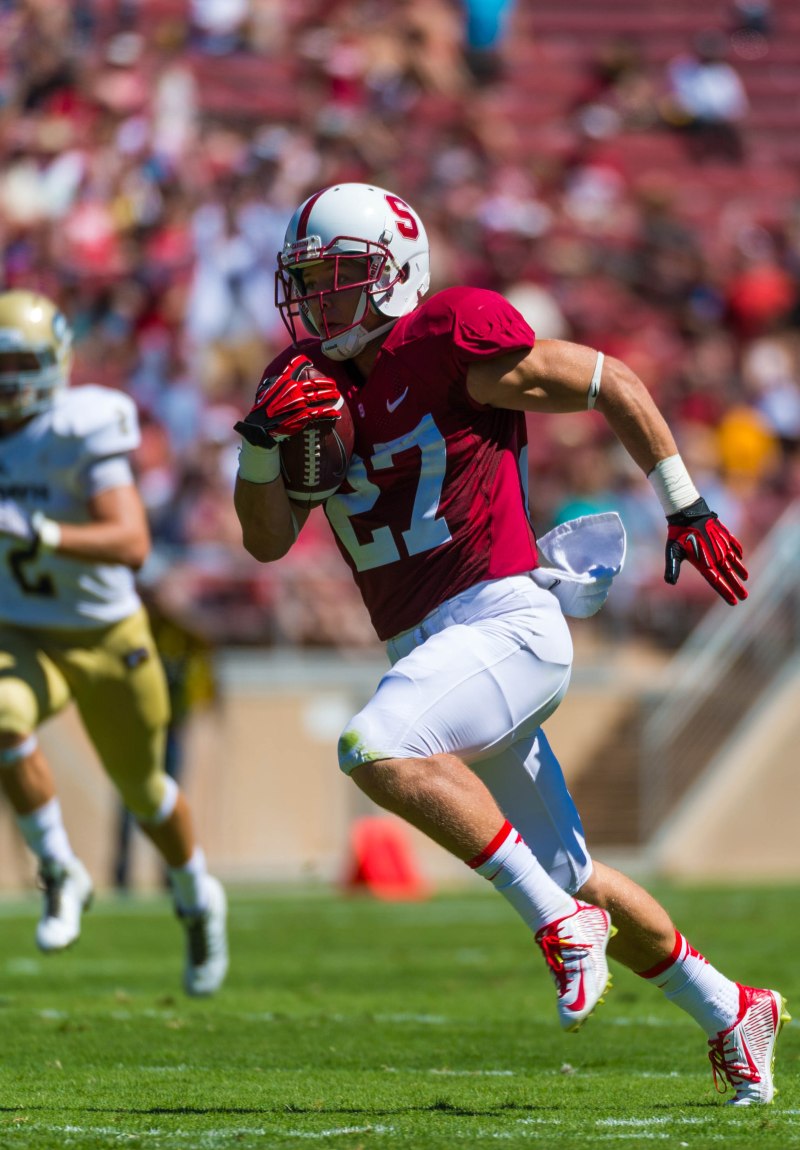“We bow to no man, we bow to no program. We are going to build a bully.”
Never one to mince words, former Stanford head coach Jim Harbaugh famously declared upon his arrival to the Farm that the Cardinal would undergo an identity facelift; on the offensive end, this shift translated into a bruising, power-running juggernaut that steamrolled over opposing defenses.
Harbaugh’s transformation succeeded in a fashion that shocked most of the nation, and current head coach David Shaw has shown the same devotion — with some criticism — to power football and punching opponents in the gut. In the past few seasons, Stanford has become a hallmark of the physical, run-first brand of football.

But, beginning last year, an overlooked element of the Stanford offense has emerged and really became a focal point of the Cardinal attack against UC-Davis: explosive passing plays. On Saturday, quarterback Kevin Hogan dished out all three of his touchdown passes on plays of 40 yards or longer. In total, the Stanford offense finished with five plays of 20 or more yards, which accounted for 8 percent of all snaps.
One of the most fascinating measures of Stanford’s high-octane offensive performance, reported as the “stat of the game” by ESPN.com, was the time of possession on each of Stanford’s five scoring drives: all coming in at under seven minutes with three under a minute. In addition, Stanford outdistanced UC-Davis with 10.4 yards per attempted pass versus the Aggies’ 2.5 yards.
More impressively, the Cardinal repeatedly took the top off the UC-Davis defense despite the absence of their statistically most explosive receiver, Devon Cajuste, who last year set a school record with 22.9 yards per catch.
With the ability to throw size and speed at the competition, we could see several new wrinkles in the Stanford offense behind an envious amount of absolute burners on the outside, including All-America everything Ty Montgomery, perennial deep ball threat Michael Rector, Cajuste and a new addition in true freshman Christian McCaffrey. Former jet-sweep-specialist-turned-starting-running-back Kelsey Young and Barry Sanders should also help Stanford in the big-play department out of the backfield.
Why does this matter? If the NFL is any indicator, a more explosive Stanford offense could take this team to another level. In the pros, there is a strong correlation between winning and explosive play differential (plays of 20 yards or more on offense minus plays of the same length allowed on defense). Last season, Stanford utilized the ground-and-pound with great success, but struggled to distance themselves from teams — seven of the Card’s 14 games were decided by eight points or fewer. Taking advantage of these offensive weapons could help Stanford build larger leads, win more games and lower some blood pressures.
***
The re-emergence of the tight end also played a major part in Stanford’s big-play potential last Saturday. With 6-foot-4, 249-pound sophomore Austin Hooper manning the “Y” tight end slot, Stanford could run or pass out of the same standard formation, which also allowed Shaw to withhold a lot of the playbook ahead of the clash with USC.
Spread out amongst three quarterbacks, Stanford’s tight ends finished with six catches for 90 yards and a touchdown — exceeding the 63 yards put up by last year’s unit over the whole season.
***
As good as Stanford’s offense and defense were against an overmatched opponent, the Cardinal’s special teams unit really stood out against the Aggies. Although he did not return a single kickoff all afternoon, Ty Montgomery, the nation’s best return man, fielded punts for the first time in his career and dramatically altered the field position game.
In addition to his touchdown return, Montgomery and later McCaffrey teamed up for an average of 26.8 yards per punt return and helped Stanford begin drives with an average starting field position of its own 49-yard line — just a yard shy of midfield. By contrast, UC-Davis first crossed midfield on the last play of the game.
Fifth-year senior Ben Rhyne and the Stanford punt coverage unit also played a major role in Stanford dominating the field position battle. After Saturday, Rhyne remains one of the most underrated punters in college football; he showed he has a leg that ranks among the top at the position after averaging close to 50 yards per punt at the Rose Bowl. Against UC-Davis, Rhyne sacrificed distance for placement as none of his four punts came in Stanford territory. On two punts, Rhyne and the coverage unit pinned the Aggies inside the 10-yard line.
On each of its subsequent possessions, UC-Davis could only a manage a three-and-out and left Stanford with a starting average starting field position at the Aggies’ 47-yard line, a result much more important to the team than a stat of 36 yards per punt would suggest.
Although the UC-Davis game did not provide a strong indication of just how good this Stanford team can be, we did learn something about the team’s relative strengths across all three units. If Stanford can continue to add new elements on offense and keep dominating on special teams, look for the Cardinal to remain a strong contender in the Pac-12.
Contact Vihan Lakshman at vihan ‘at’ stanford.edu.
